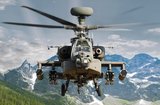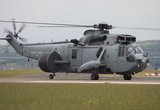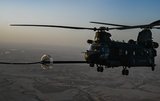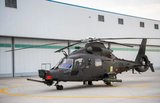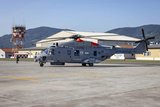Military debates role of contracted support
The military will always retain responsibility over its rotorcraft maintenance, despite the increasing trend to employ contractors for the servicing of its aircraft.
A panel of military representatives at the 2011 Defence IQ International Military Helicopter conference on 12 May agreed that the future of air force engineering personnel looked ‘bleak’ due to the greater role of contracted engineers.
‘The answer deliberately poses a point of a yes or no, and I think it’s in the grey areas that we need to operate and think,’ said Wg Cdr David John Tozer, commanding officer of Forward Support Wing at RAF Odiham.
‘If you have outsourced your complete capability, can you go and do what you need to do? Is the military instrument actually agile? And the answer I think is no.’
He said that the requirements to outsource some of that to a contractor needed to be looked at and that contracting out all responsibility could put the military at a significant risk.
‘Military aircraft are a responsibility for the military organisation. In the military I am responsible for anything that happens to that aircraft. If I outsource anything on that to industry, I outsource that responsibility as well,’ Col Remy Michelshein, of the Netherlands Ministry of Defence’s Defence Materiel Organisation told the audience.
‘It is very good to co-operate with industry, I think we should move to co-operate more with industry, but I agree there are certain aspects that we cannot outsource.’
An industry viewpoint came from Trevor Pritchard, UK director of business for Vector Aerospace, who said that each component of an agreement is there to play up to its strengths.
‘Industry’s part isn’t to bear arms,’ Pritchard told Shephard.
‘If we concentrate on the best way to deliver output, I think the respected roles in industry and the services are defined a bit more clearly.’
He emphasised the importance of contracting for output, and said that if industry was contracted to do so, it can play to its strengths and deliver and demonstrate reduction in cost and value for money, factors considered by the panel to be the main purpose of contracting out.
‘In my mind there is absolutely a point beyond which industry will not be able to provide the services currently provided by uniformed personnel,’ he told the panel.
Another potential problem was the military having no personnel available to take on the role that industry is now playing if it was forced to do so.
Tozer pointed out that although facilities and resources were now arguably limited as a result of work being directed to industry, the ‘green and blue suits’ were still available if they were ever needed to take on their former roles.
More from Defence Helicopter
-
![Germany to send WS-61 Westland Sea King helicopters to Ukraine]()
Germany to send WS-61 Westland Sea King helicopters to Ukraine
Germany has committed to sending Ukraine six of its 21 retiring WS-61 Westland Sea King multirole, amphibious helicopters.
-
![Boeing secures $271 million to advance modernisation of US Special Operations' MH-47G Chinook]()
Boeing secures $271 million to advance modernisation of US Special Operations' MH-47G Chinook
Boeing has clinched a major contract modification to further its backing of the US Special Operations Command’s MH-47G Chinook aircraft modernisation effort.
-
![Dubai Airshow 2023: South Korean homegrown helicopters make international debut]()
Dubai Airshow 2023: South Korean homegrown helicopters make international debut
Two KAI helicopters, the KUH-1E utility helicopter and the Light Attack Helicopter (LAH), have taken centre stage at the Dubai Airshow 2023.
-
![Italian Navy receives final NH90 helicopter]()
Italian Navy receives final NH90 helicopter
The Italian Navy now boasts a fleet of 56 NH90 helicopters comprising 46 SH-90As and 10 MH-90As.
-
![Argentina seeks AW109 and CH-46 Sea Knight helicopters]()
Argentina seeks AW109 and CH-46 Sea Knight helicopters
The Argentinian Air Force (FAA) and the Argentinian Naval Aviation Command (COAN) are looking for options to upgrade their helicopter fleets.
-
![DSEI 2023: Lockheed to produce about 40% of Black Hawks on UK soil if it wins NMH contest]()
DSEI 2023: Lockheed to produce about 40% of Black Hawks on UK soil if it wins NMH contest
Lockheed Martin promises a boost to the British job market and export opportunities, while strengthening ties with Poland and positioning the UK for a future in rotorcraft technology in the event of a New Medium Helicopter competition triumph.












